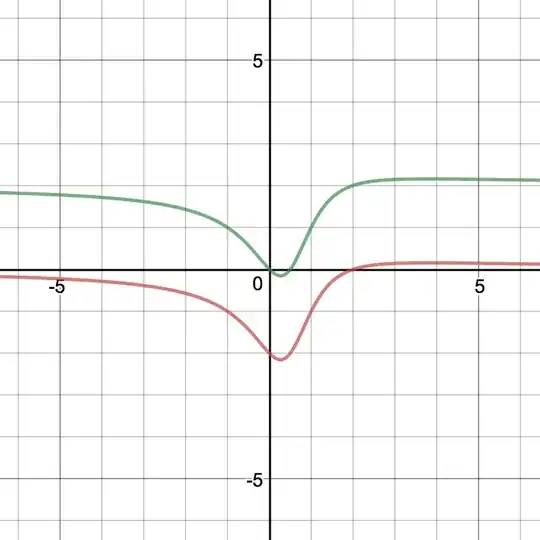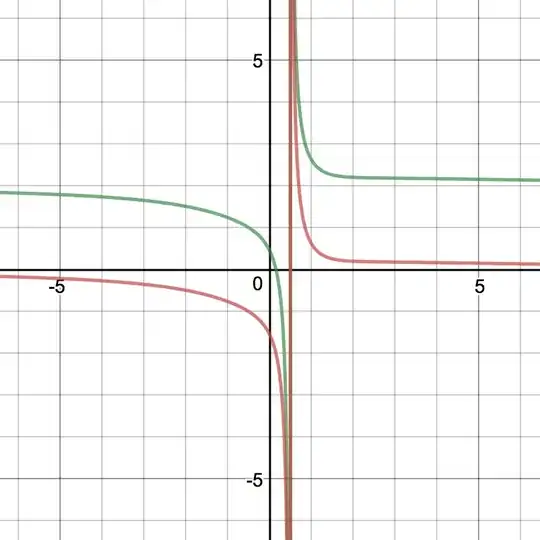I feel that it's only natural that intuition would fail you in cases like these. If you wrote the two functions out as
$$f(x)=\frac{2\left(x^2-x+1\right)+\left(x-2\right)}{x^2-x+1}$$
$$g(x)=\frac{x-2}{x^2-x+1}$$
it would be obvious that the difference between them was 2. This is the first thing you could trip over, the degree of the numerator don't actually differ by 1, they are the same.
I guess if you made it a rule to divide whenever you have a rational function where the degree of the numerator is greater than or equal to the degree of the denominator until it isn't, you would get consistent results. (Kinda like how you learn waaay back how $\frac{13}{7}$ is an improper fraction, because it's actually bigger than a whole number, and that you should write it as $1\frac{6}{7}$. a function $f(x)=\frac{P(x)}{Q(x)}$ where the degree of $P(x)$ is greater than or equal to the degree of $Q(x)$ is called an improper rational function.)
But, and this might be another thing that's bugging you about this question, you can't just do that! (As my algebra teacher used to exclaim in exasperation.) You introduce a new constraint: $x^2-x+1\neq0$. Which isn't relevant if x is real, but does change things up a bit if it s a complex number.
You have asked for graphs, and ye shall receive.
This is probably what you get when you graph the two functions $f$ and $g$.

But if you allow for complex values of $x$, it can also look like this:

(Sans the vertical line at x=0.5, I don't know why that is happening, probably a limitation in the graphing engine on desmos.)
Not so obvious that the difference between the two is 2 in this case...
Sorry, I just realized this probably doesn't answer your question on how you can reconciliate this apparent discrepancy with your intuition, but I thought explaining why it may not be that clear-cut would help at least a little bit.
Playing with the parameters used in the graph might help further your understanding, here's a link to the interactive graph, with a little more in depth graphical interpretation of why you might doubt what you logically "know" to be true.
As for the equations I used in place of the given ones... You'll just have to trust my algebra (which you shouldn't in critical situations, but I think this is safe enough hehe). I did them on a legal pad, but I'll type them up if anyone insists.


